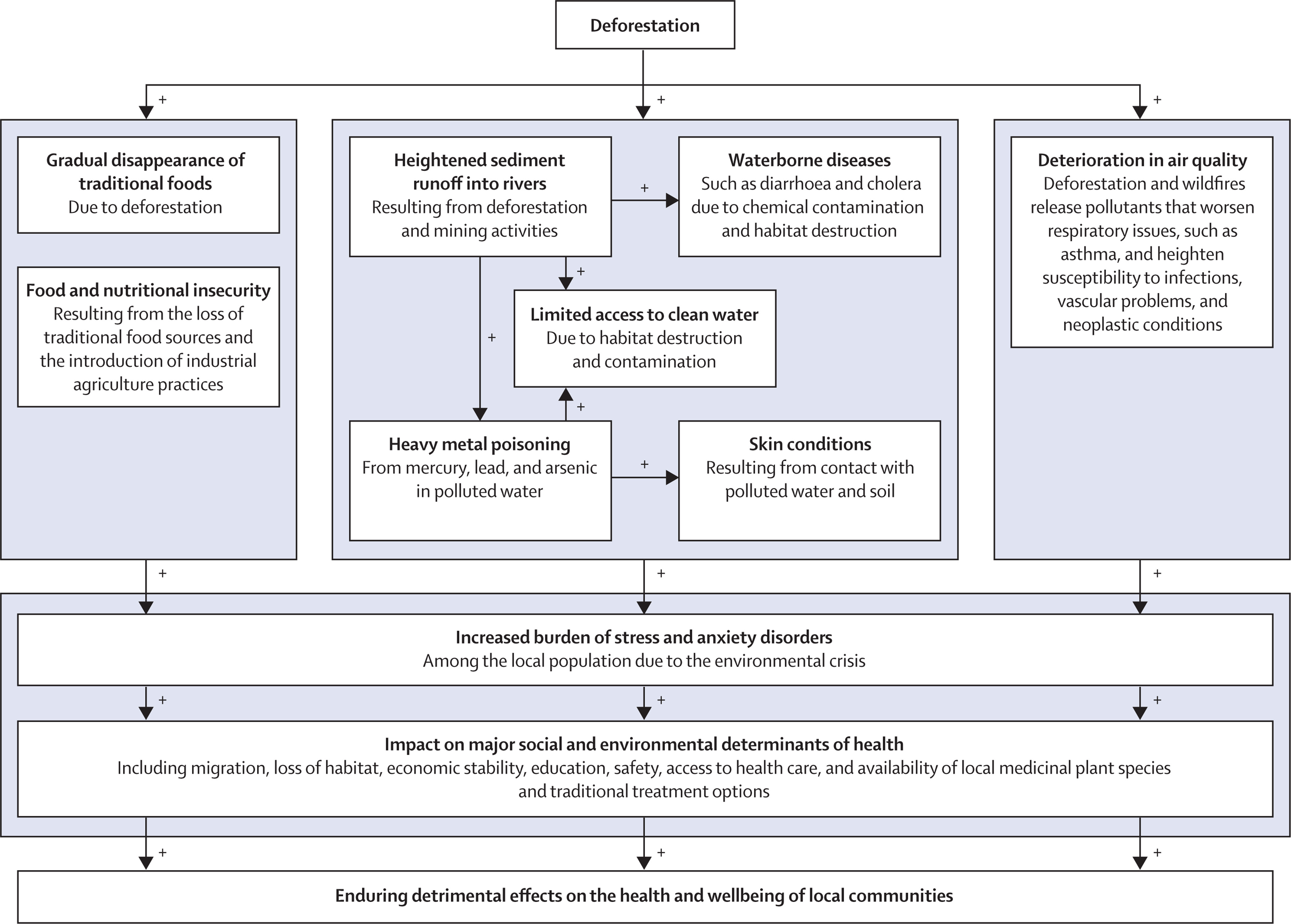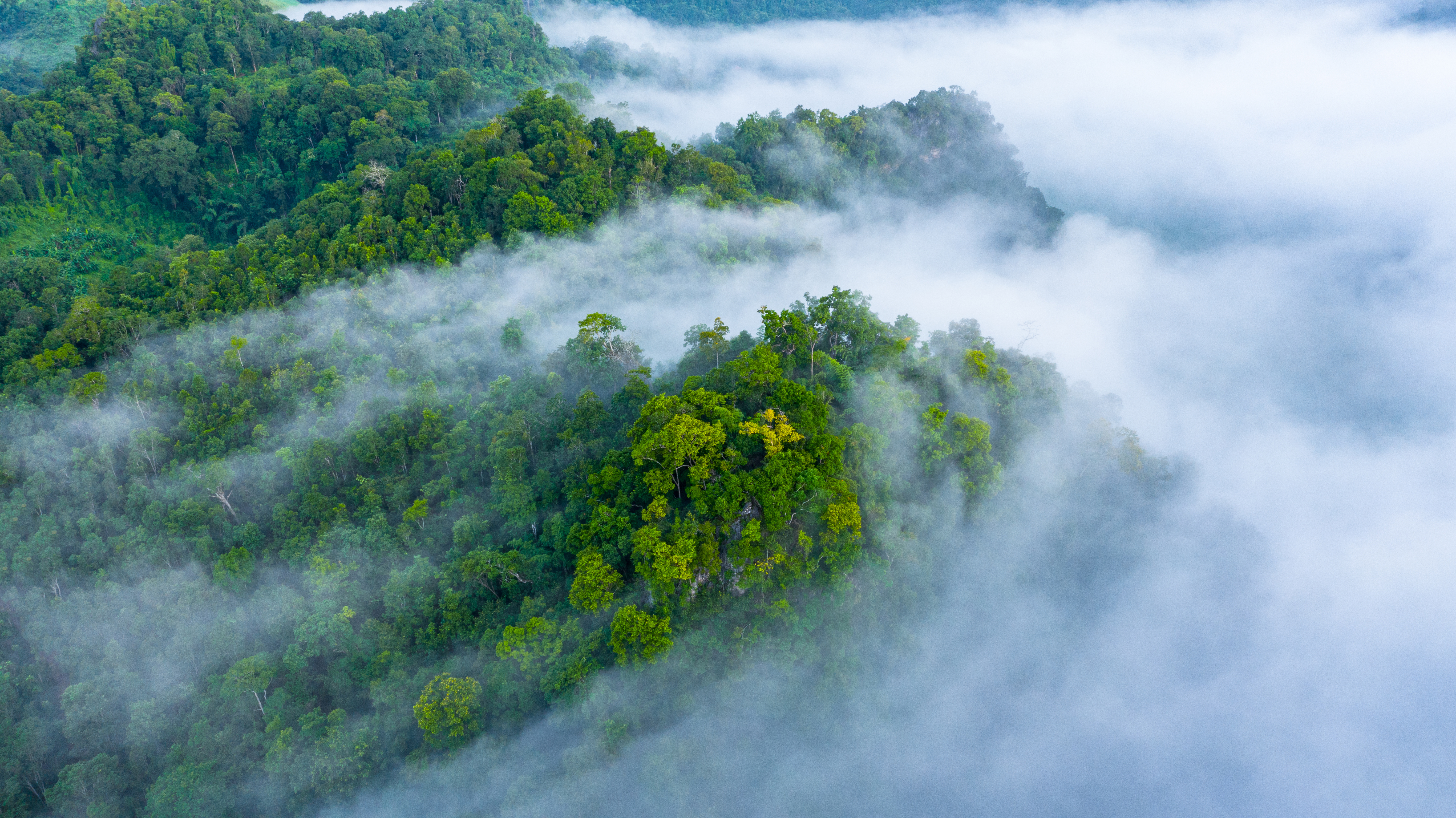
Commentary on climate change and health by researchers from Florida International University, the Oswaldo Cruz Foundation, University of Cartagena, PAHO/WHO, and Fiocruz's Global Health Centre, was published in the Lancet Global Health, the leading specialty journal for global health.
In this position paper, researchers highlight the devastating impacts of climate change in the Amazon (and in South America region, by extension); but importantly, why health can be a critical component for: a) any region-wide strategic initiative to tackle the growing climate crisis, and b) serving as a lever to gain greater policy traction for necessary climate action.
Read on The Lancet Global Health
The Amazon, the world's largest rainforest covering more than 1·6 billion acres1 extends across numerous South American nations—including Bolivia, Brazil, Colombia, Ecuador, French Guiana, Guyana, Peru, Suriname, and Venezuela.2 It plays a crucial part in climate stability by storing more than 150 000 billion tons of carbon and accounts for between 15% and 20% of the total freshwater discharge into the Atlantic.3
It is home to approximately 47 million people, including 2·2 million indigenous individuals.3 To these inhabitants, the Amazon provides a wide range of essential services and supplies, plays a pivotal role in regulating the local climate, purifying water sources, and supplying various edible and medicinal plants,4 and serves as a protective barrier for its inhabitants from the spread of vector-borne diseases such as Zika and malaria.5 Despite these crucial roles, the Amazon faces a state of existential crisis.3 Deforestation, wildfires, and environmental degradation pose grave threats to its biodiversity, with the surface and groundwater experiencing rising pollution.
To address this threat, a regional perspective to better conceive integrated solutions for saving the Amazon has been proposed.6 While this is a much needed and comprehensive approach, we argue that the safeguarding of human health should also become a key component of this solution, especially given that the wellbeing of Amazonian communities is essential for the preservation of the Amazon and that health promotion and disease protection could serve as an effective nudge to implement the integrated solutions.

The + symbol signifies positive feedback, a change in one variable triggers an amplification or reinforcement of that change, typically escalating the initial impactCaption
The people of the Amazon are encountering varied adverse public health effects. First, an ecosystem transformed by deforestation ensues a shift in spatial distributions, providing new breeding grounds for disease-carrying vectors, such as mosquitos. Additionally, an altered microclimate promoting greater vector survival, faster development and likelihood for the emergence of novel pathogens, and enhanced risks of antimicrobial resistance.7 Furthermore, increased population movement increases exposure to vector-borne diseases.
Second, deforestation and wildfires substantially release particulate matter and greenhouse gases into the atmosphere, which causes respiratory issues, worsening conditions such as asthma, respiratory infections, and vascular and neoplastic conditions.8
Third, deforestation and mining operations tend to intensify chemical contamination, acid mine drainage, and habitat destruction causing health risks to aquatic ecosystems and humans. These risks include spreading waterborne diseases such as diarrhoea and cholera, heavy metal poisoning from mercury, lead, and arsenic, skin conditions, and limited access to clean water.9
Fourth, the gradual disappearance of traditional fruits, nuts, and other edible resources are likely to result in food and nutritional insecurity. The introduction of industrial agriculture practices such as biofuel crops and cattle ranching can further exacerbate food insecurity among local inhabitants.10
Fifth, the environmental crisis in the Amazon is increasing the burden of stress and anxiety disorders among the local population. For example, deforestation and similar environmentally harmful activities are illegal and can heighten feelings of insecurity and vulnerability within affected communities.
Finally, the ongoing climate crisis in the Amazon is likely to impact major social determinants of health such as migration, economic stability, education, safety, and availability of local traditional medicine.
The health challenges in the Amazon, as outlined earlier, are complexly interconnected (figure). Hence, preserving the Amazon's sustainability and wellbeing necessitates a systems thinking-based comprehensive strategy, as isolated solutions could prove insufficient to sustain the region's resilience and could potentially worsen other health-related issues.
To address effectively the Amazon crisis, a comprehensive approach, involving multiple stakeholders at local, national, and regional levels in South America (and perhaps beyond), is urgently needed. Therefore, considering the overwhelming human health implications and highlighting the health argument to reinforce the regional-wide efforts will be critical for adaption and scale up of co-beneficial health adaptation strategies.
In particular, such health-related strategies could involve the developing of: locally relevant, replicable, nature-based measures to enhance health resiliency; greater public awareness regarding consequences to Amazon deforestation, such as beef, soy, gold, and other ore; a whole-of-society approach for primary health care; community-based telemedicine networks to facilitate remote health-care consultations among isolated communities; transdisciplinary research to characterize the links between deforestation, climate change, and health to take context-specific and scalable solutions; and mobilizing local advocacy groups, non-governmental organizations, and civil society to push for policy reform and acquire increased political commitments. This way, by importantly acknowledging the interconnected link between environmental degradation and human health consequences, we could act more effectively towards preserving the Amazon, the wellbeing of its communities, and the planet by extension.
References
1 World Wildlife Fund. Amazon facts. 2023. https://www.worldwildlife.org/
places/amazon (accessed Sept 10, 2023).
2 World Wildlife Fund. Living Amazon report 2022. Nov 8, 2022.
https:// www.worldwildlife.org/publications/living-amazon-report-2022
(accessed Oct 1, 2023).
3 Strand J, Soares-Filho B, Costa MH, et al. Spatially explicit valuation of the
Brazilian Amazon forest’s ecosystem services. Nat Sustain 2018; 1: 657–64.
4 Gonzalez Daza W, Muylaert RL, Sobral-Souza T, Lemes Landeiro V.
Malaria risk drivers in the Brazilian Amazon: land use-land cover
interactions and biological diversity. Int J Environ Res Public Health 2023;
20: 6497.
5 MacDonald AJ, Mordecai EA. Amazon deforestation drives malaria
transmission, and malaria burden reduces forest clearing.
Proc Natl Acad Sci USA 2019; 116: 22212–18.
6 Peña-Claros M, Nobre C. A regional approach to save the Amazon. Science
2023; 381: 1261.
7 Lemos LN, Pedrinho A, de Vasconcelos AT, Tsai SM, Mendes LW. Amazon
deforestation enriches antibiotic resistance genes. Soil Biol Biochem 2021;
153: 108110.
8 Reid CE, Brauer M, Johnston FH, Jerrett M, Balmes JR, Elliott CT.
Critical review of health impacts of wildfire smoke exposure.
Environ Health Perspect 2016; 124: 1334–43.
9 Passos CJ, Mergler D. Human mercury exposure and adverse health effects
in the Amazon: a review. Cad Saude Publica 2008; 24 (suppl 4): s503–20.
10 Shanley P, Luz L. The impacts of forest degradation on medicinal plant use
and implications for health care in eastern Amazonia. Bioscience 2003;
53: 573–84.

